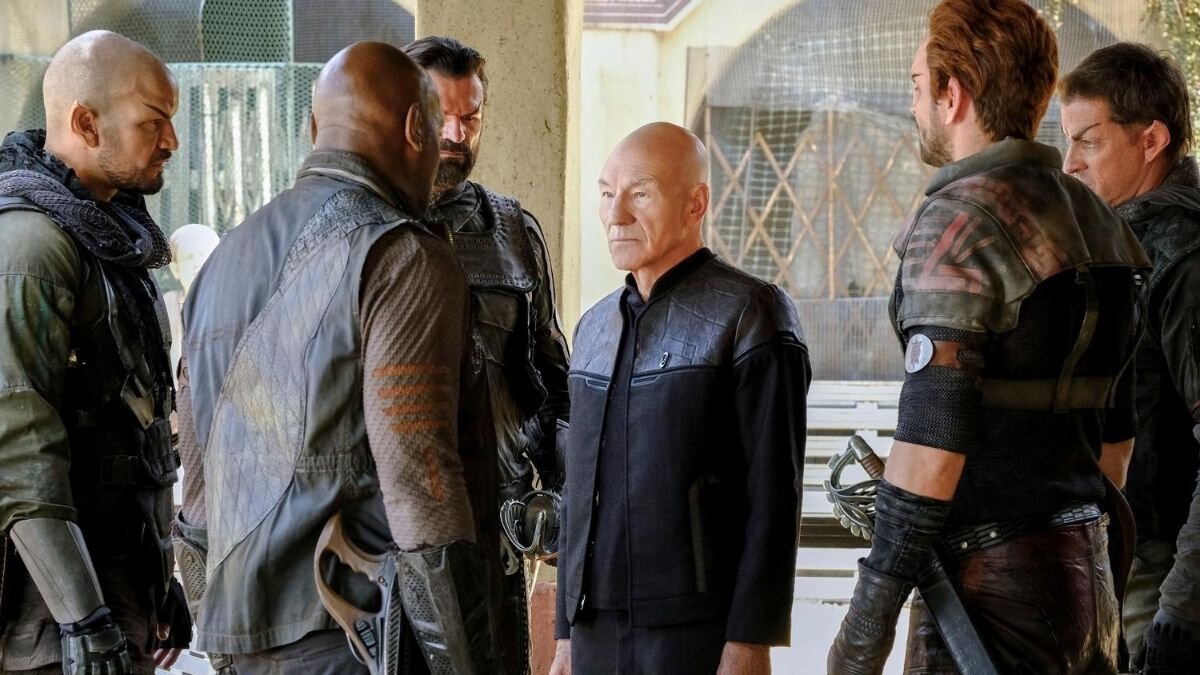Prop master Jeff Lombardi describes building out the world of Star Trek: Picard

Sir Patrick Stewart as Jean-Luc Picard in Star Trek: Picard
Every Star Trek series depends on the production staff to provide a setting that not only the audience will believe, but one the actors will, too. That’s where props come in. In a video from StarTrek.com, Picard prop master Jeff Lombardi gave audiences an inside look at what it takes to create the world we see onscreen.
"We're the people who manage and build the materials that an actor uses, physically, on the set,” Lombardi said. “It’s not always just what the actor uses. Sometimes it can be story specific.” Props such as this would include designing a bat’leth just for decoration, as well as recreating the “Captain Picard Day” banner from Star Trek: The Next Generation episode, “The Pegasus”. Lombardi went on to say “A prop is anything that any other department in the film doesn't want to deal with, and it's up to us to figure it out and deliver it on set.”
Sir Patrick Stewart was involved early on in selecting props for Star Trek: Picard. “I sent him kind of a visual breakdown,” Lombardi said, “different options for teacups, watches, badges, the Ressikan Flute, anything I could. I just wanted to get it in front of him and talk about each and every thing.” One of those items is the wooden cane, outfitted with a small telescope, which Picard carries in the series. In the StarTrek.com video, Lombardi reflected on Stewart's reaction to the prop, saying, “I showed that to Patrick and he instantly was like ‘I love that idea, of him having a telescope and he’s going to be spying on all of the chateau workers down there, grumbling and barking orders at them in French.’ That’s what I really love about props and working with actors, when you can find something that they can absorb into their character, ignites a fire inside of their imagination, and start feeling more and more in the world.”
One of the most impactful props in season one of Star Trek: Picard are the individual body parts of the Soong-type android, B4. “A lot of the old Star Trek props were auctioned off and scattered across the world,” Lombardi explained. “We didn’t want to build a new Data. I wanted to use the old Data parts that we had seen before, despite what shape they might be in”. Lombardi and his team set out to locate the original Star Trek: Nemesis props, finding the torso in Hong Kong, and the head in Calgary.
Another essential prop is the communicator, or “comm badge”. When designing the badge of the future, the props department went back in time...or is it forward? “If you remember in some of the older seasons of Voyager and The Next Generation,” Lombardi said, “they actually go to the future that we’re in and there was a badge designed for that.” Using that design as a sort of template, the team tried different material and color combinations until they settled on the current design of chrome and charcoal.
The dedicated efforts of the Star Trek: Picard props team are helping to bring a level of authenticity to an imagined future. “Being a Trekkie and knowing how much the fans are dedicated to this world and this universe,” Lombardi said, “I definitely wanted to nail that for them.”
And of course, you can check out all those detailed props for yourself in Star Trek: Picard; the whole first season is now streaming on CBS All Access.
Chris Peterson is a contributing writer for Daily Star Trek News on the Roddenberry Podcast Network. An outdoor enthusiast and a fan of film and literature, he is also an actor, singer and musician with stage credits including CATS, Fiddler on the Roof, The Rocky Horror Show and The Producers.






